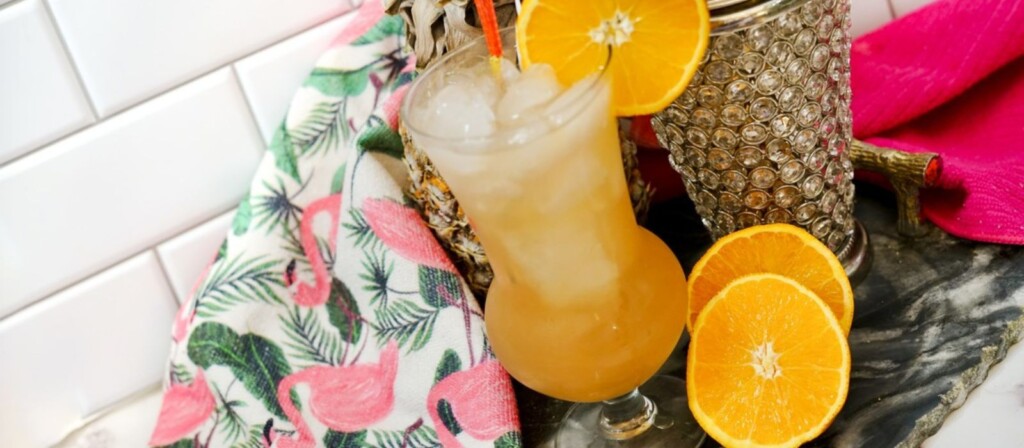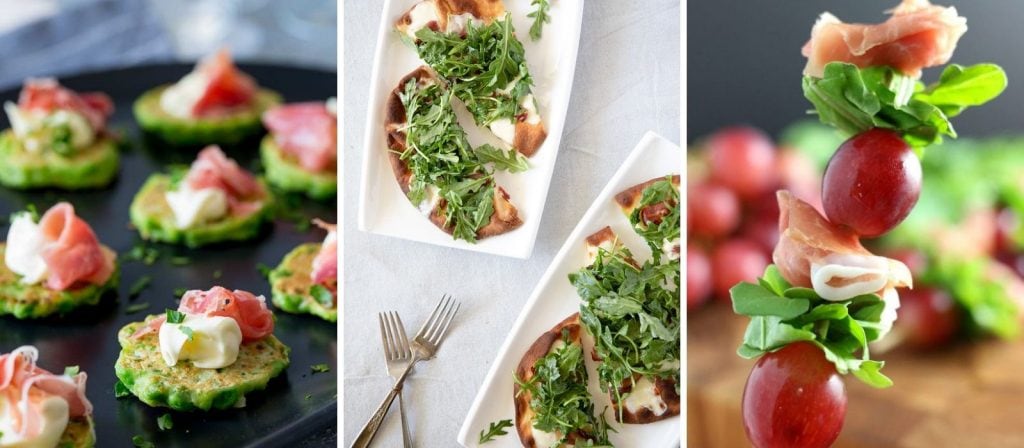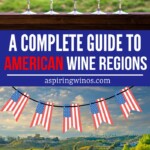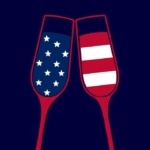When we think of USA made wine certain American regions come to mind. In this guide we’ll share everything you need to know about American wine including its history, how it compares on the world stage, and the best wines the land of the free has to offer.
America is a vast country. America is a vast wine producing country! In this (not so) brief guide, I want to outline some of the most prominent wine producing regions across the US to give you a good introduction into what it has to offer. I’ll cover California, Oregon and Washington across a range of styles and I’ll even throw in a recommendation for each variety to get you started. Before we delve into each region however, there are a couple of (not so) small matters to address first.
Is American Wine Better Than French?
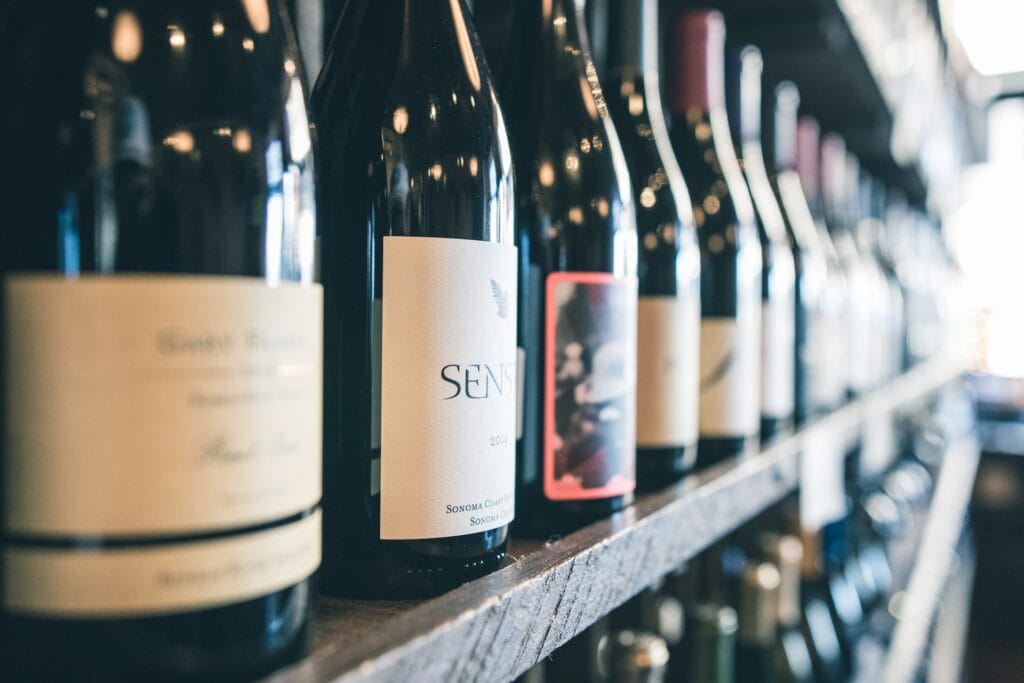
Whilst the US is steeped in wine making history, the quality of its wines has often been seen as inferior to its French counterparts. That was until the spring of 1976 when British wine merchant Steven Spurrier decided to host a blind tasting in Paris. He gathered the foremost French wine critics of the day and asked them to taste a variety of Cabernet Sauvignons and Chardonnays from France and USA respectively. The judges were told that they could assess each wine in whatever manner they wished provided that they stick to a 20-point score system.
It was billed as a David vs Goliath spectacle and not even the American winemakers thought their wines stood a chance against the mighty Mouton-Rothschild or Meursault Charmes Roulot. Guess what happened?
American Wine Outperformed French Wine in a Competition
Wines from the USA topped the rankings in both red and white classes to the astonishment of the judges. Stags Leap Cellars 1973 topped the Cabernet Sauvignon category and Chateau Montelena 1973 bested the greatest Chardonnays from Beaune. It went down in infamy as the Judgement of Paris.
There was pandemonium. One embarrassed judge asked for her tasting notes back and, after being refused, she went on to slate Steven Spurrier and call the whole thing a fix in her magazine. The head of the appellation contrôlée authority in France, who had been one of the tasters, was asked to resign by his peers and the French press poured scorn on the whole affair.
France VS USA Wine: Which is Better?
A new tasting was organized in 1986 to see if both sets of cabernet Sauvignons would age well. The French were confident they’d win this time but not only did an American wine win again (Clos Du Val Winery Cabernet Sauvignon 1972), the rest consolidated their positions in the standings!
A final tasting was organized in 2006 as a 30th anniversary celebration with many of the great wine critics in attendance. All of the same Cabernet Sauvignons were entered into the competition and American wines trounced their French counterparts. The victory was complete, American wines had come of age.
Of course, the matter of whether North American wine can be considered better than French is subjective but it is undeniable that some of the most exciting wines in the world right now are American. Even as I write this article, my wine rack is dominated by both French and American wines and I’m struggling to pick a winner between the two, I simply love both!
What American Wine is like Bordeaux Wine?
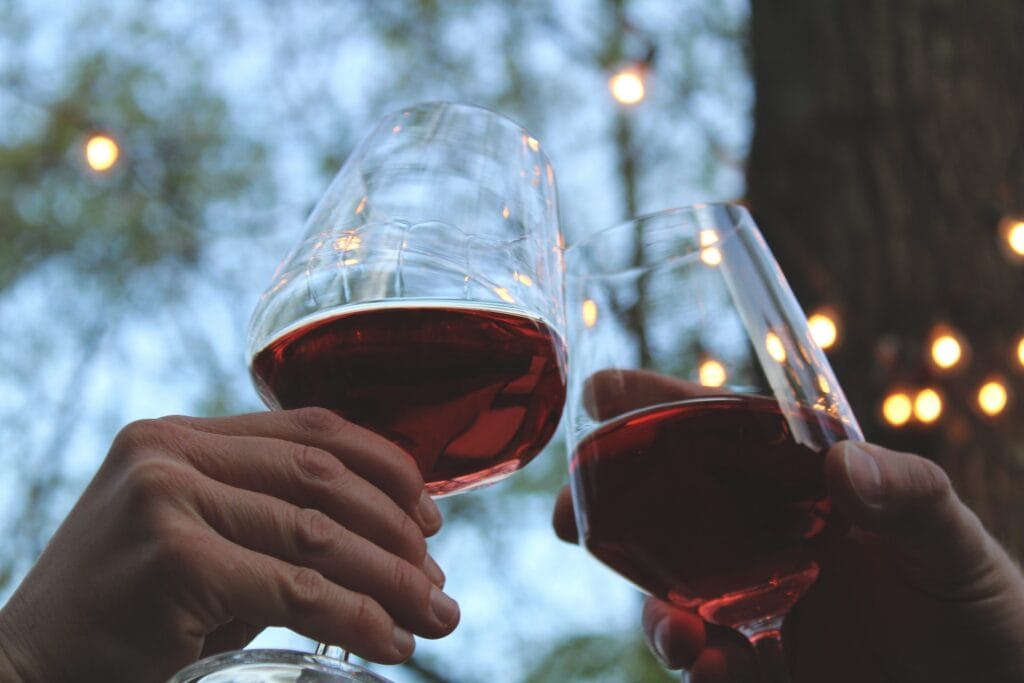
Given that we’ve made some useful comparisons between French and American wine, we should also explore what American wines are made in the style of Bordeaux reds. California and Washington are most renowned for their Bordeaux styles with Californian single varieties of Cabernet Sauvignon and Merlot being popular. We can’t overlook Washington either with their Bordeaux blends of Cabernet Sauvignon, Merlot, Petit Verdot, Malbec and Syrah being among the finest wines produced in America. The tasting notes of most of these wines read exactly as if you were drinking the best from Bordeaux with many of them tasting just as good at a fraction of the price! We will discuss each style in greater depth as we explore each region and rest assured you will find some absolute gems.
Can American Sparkling Wine be called Champagne?
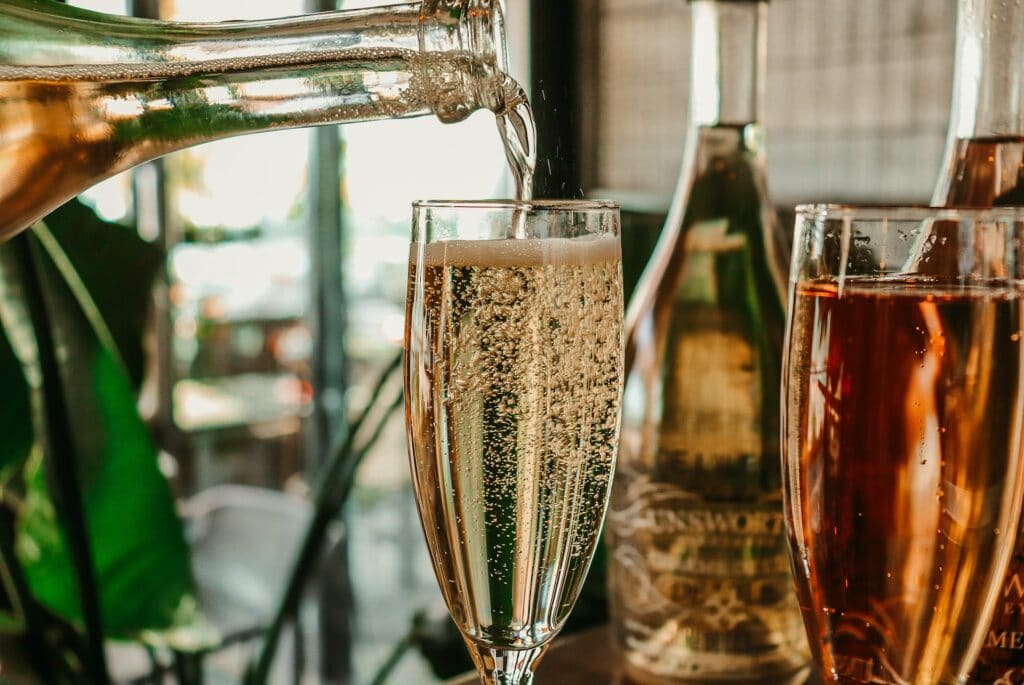
The second elephant in the room! The shortest answer is not exactly, but it’s a bit more complicated than that. The French have always been keen to protect the good name of Champagne and, having been irked at the production of “Domestic Champagne” in California from the 1860’s onwards, inserted a clause in the Treaty of Versailles stating that only sparkling wine from the Champagne region in France can be called “Champagne”. Both enemies and allies alike were expected to adhere to this clause with most participants on both sides accepting and ratifying the treaty.
The US signed the treaty but it was never ratified in the senate which allowed American wine producers to continue to call their sparkling wine champagne.
Initially, this wasn’t a problem as prohibition kicked in but after repeal and following the second world war, the newly formed The Comite Interprofessionnel du Vin de Champagne (CIVC) were forever hounding US congress to change its position on the use of “Champagne”. Most US wineries respected their French counterparts and labelled their sparkling wines as something else entirely but there were a few wineries such as Korbel who steadfastly refused to change their labels.
US and Europe Sign a Treaty Over Champagne
Fast forward to 2006 when the US and Europe signed a trade agreement in which it was agreed that all sparkling wines produced in the US could not be called “Champagne”. There was a catch, however. The US inserted a grandfather clause which meant that any American winery that used the term “Champagne” before the trade agreement was signed could continue to do so. This meant that Korbel & co. were allowed to carry on!
That being said, even the traditional champagne houses see the potential in American sparkling wine with Roederer, Mumm and Chandon all having vineyards and producing outstanding examples in California.
So, now that we’re through annoying the French, let’s look at some of the styles that the US is most renowned for.
California Wines
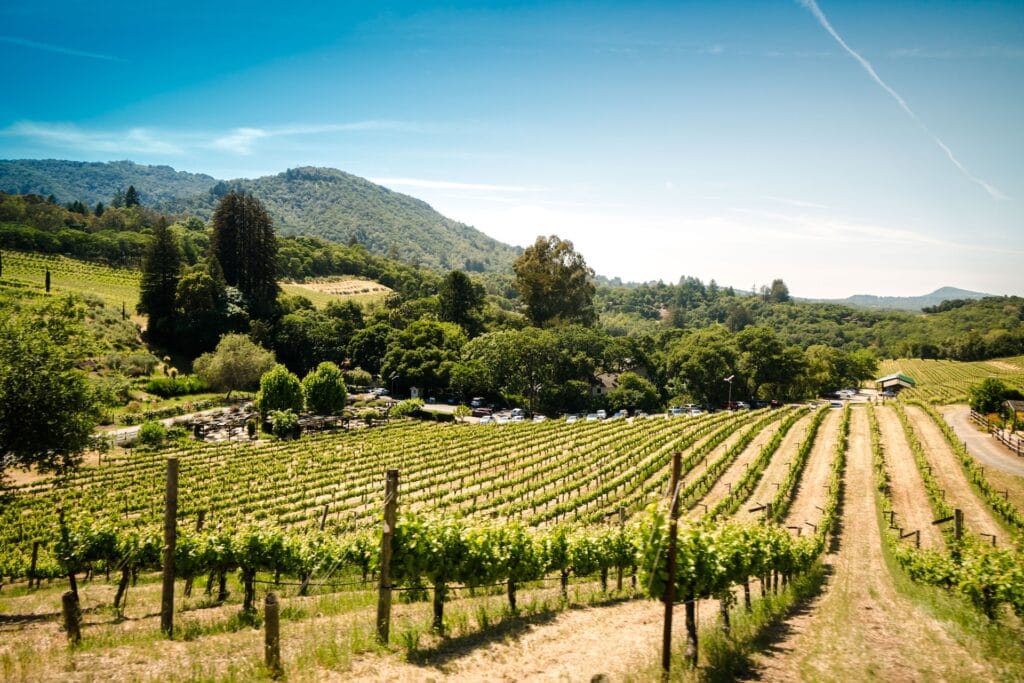
If California was considered a country, it would be the fourth largest wine producing country in the world! Over 80% of all wine made in the US comes from California. The region is vast and offers a range of microclimates that allow varying styles of the most popular grapes to be produced. California is split into smaller regions, the North Coast, Central Coast, Central Valley and South Coast though many of the American Viticultural Areas (AVA’s) we’ll discuss will be found in the North and Central Coasts.
Cabernet Sauvignon
Red
California is synonymous with blockbuster Cabernet Sauvignon. Look out for AVA’s on the North Coast including Napa Valley, Clear LakeandSonoma County where the wines will be full bodied, high in tannin and have excellent ageing potential. They will be ruby/garnet in the glass with good notes of black currant, cherries, plum, pencil shavings and even mint on the nose and palate.
Paso Robles and Stags Leap District Cabernet Sauvignon will be marginally lighter in body and tannin. You can also expect more red fruits such as currants and cherries though notes of chocolate and cedar are common too.
Merlot
Red
Napa Valley is king for Merlot. Expect the wines to have a medium body with smooth tannins that still provide great ageing potential. Black & red cherry will dominate the palate with hints of chocolate, vanilla and a nice long finish offering a peppery spice.
Merlot from Mendocino will often display herbal notes too. Look out for Sonoma and Oak Knoll District as their Merlots are prized for their red fruits and oaky creaminess.
Bordeaux Blends
Red
Paso Robles and Sonoma County head up California’s best Bordeaux blends with wines that will be full bodied, have great ageing potential and offer notes of blackcurrant, tobacco, vanilla, mint and peppery spice that keeps the wines mildly acidic. Blends from Alexander Valley will be similarly black fruit forward though expect some cherries, chocolate, earth and leather on the palate too.
Pinot Noir
Red
The cooler, foggy region of the Russian River Valley is ideal growing conditions for Pinot Noir. Red cherries, raspberry, plum and vanilla are the signature tastes and there’ll be plenty of mouth-watering spice as the wine goes down. The Sonoma Coast offers a more floral variety with plenty of white flowers and perfumed aromas. Santa Maria Valley on the Central Coast will offer darker fruit aromas such as blackberry though there will still be plenty of spice with even a hint of vanilla. The wines may be a touch bolder too.
Zinfandel
Red
Zinfandel is America’s grape variety! A very close relative of Primitvo, It has found a second home in the US with the best examples producing styles that have a lot of jammy fruit on the palate. They’re also often fuller bodied with decent ageing potential. Only the hotter climate of California is suitable for this juicy red wine and it can be found in a number of regions. Zinfandel from Sonoma County, Lodi and Napa Valley are going to be full bodied with notes of blackberry, cherry, cocoa and vanilla on the nose and palate. You may even get some blueberry and a hint of spice from some examples. Zinfandelfrom the Central Coast (Paso Robles) will often be lower in tannin but juicier than its northern counterparts so expect plenty of jammy red fruit with some cinnamon and vanilla.
Californian Sparkling Wine
White
American Sparkling wine has also gained prominence over the last 40 years, the very best examples of which are coming out of California. Chardonnay, Pinot Noir and Pinot Meunier are the staple grapes used but because US winemakers aren’t as hamstrung as their counterparts in Europe, a wide variety of grapes can be used in a wide variety of styles.
California is very suited to produce sparkling wine thanks to its array or soils and microclimates. The fact that Chardonnay will literally grow anywhere doesn’t hurt either!
Napa Valley sparkling can be amber in color with a full body, creamy mousse and low acidity. Citrus fruits and apricot will dominate the palate too. Sparkling from Russian River Valley will often display more green fruits so expect apples and pear in abundance with a touch of hazelnut and a refreshing acidity. Sparkling wine from Carneros may offer floral aromas and even a bit of minerality on the palate with notes of honey, vanilla and cream.
Chardonnay
White
I love a good oaked Chardonnay and there is nowhere better than California for this style. Carneros and Russian River Valley will produce Chardonnays with notes of peach and banana combined with just the subtlest hint of oak allowing the body of wine to stay light and fruity. Sonoma and Mendocino are the places to go if you want a fuller, creamier body with notes of butter, vanilla, almonds and tropical fruits. You can also get average examples of Chardonnay from the Central coast where it is mass produced for Supermarkets.
Sauvignon Blanc
White
Sauvignon Blanc is not as widely planted in California but there are still some great wines to be had. Californian Sauvignon Blanc is quite unique in flavor so stick to Napa Valley, Sonoma and Mendocino if you want refreshing acidity combined with peach, grapefruit melon and orange. Russian River Valley Sauvignon Blanc will also offer racy acidity with notes of grapefruit and lemon.
Pinot Gris
White
Russian River Valley provides some of the best examples though don’t be surprised to find Sonoma County and Calaveras County on the label too. Russian River Valley examples may offer softer Pinot Gris with notes of tangerine, apricot and floral notes. Sonoma County Pinot Gris will also be similar in style.
Oregon Wines
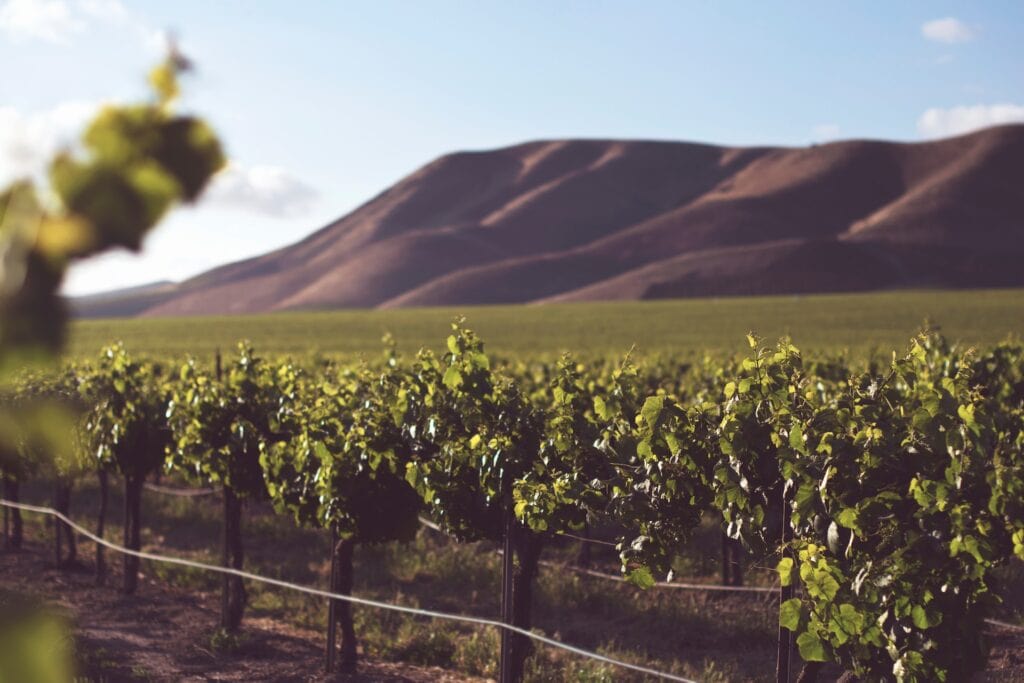
Oregon’s wine producing regions are directly north from California and are split into two regions: Northern Oregon and Southern Oregon. Northern Oregon has the largest concentration of wineries with Willamette Valley being the most prominent AVA. Southern Oregon is a touch warmer than the north but there are areas that are tempered by the cooling breeze of the Pacific Ocean, allowing varying styles of Merlot, Cabernet Sauvignon, Chardonnay and Pinot Gris to be produced.
See also: Where to go Wine Tasting in Portland
Pinot Noir
Red
Oregon is best known for its Pinot Noir with some outstanding examples coming from Willamette Valley with notes of cherries, caramel, smoke and a white pepper spice. As with all Pinot Noirs, the body will be fairly light, they’ll be low in tannin and can be drunk immediately. If you enjoy the floral character of Pinot Noir then check out some examples from Dundee Hills. Expect violet aromas with plenty of red cherry and raspberry on the palate. The spice may be more pronounced, offering a higher acidity too.
Chardonnay
White
Somewhat rarer though similar in style to the Chardonnays found in Burgundy. The wines will be lighter in body and offer more minerality with notes of flint as the wine goes down. Expect a higher acidity too! Willamette Valley and Dundee Hills both produce good examples that burst with apples and pears. You can also find oaked examples that will offer butter, cream and pastry notes.
Riesling
White
Riesling hasn’t really taken off in the US yet which is a shame because the styles are similar to those in Alsace and Pfalz. Willamette Valley produces solid examples that are similar to its German counterparts with notes of apples, apricot, lemon and that undeniable aroma of petrol. You may also experience notes of mushroom and earth too.
Pinot Gris
White
Oregon do a really good job of turning this average, bulk production grape (think Pinot Grigio in Italy) into something that can be savored. Pinot Gris from Willamette Valley will offer fruity notes of apples, pear, lemons, limes and you may also get smoky flavors from the glass. You can also expect racy acidity with a touch of spice.
Washington Wines
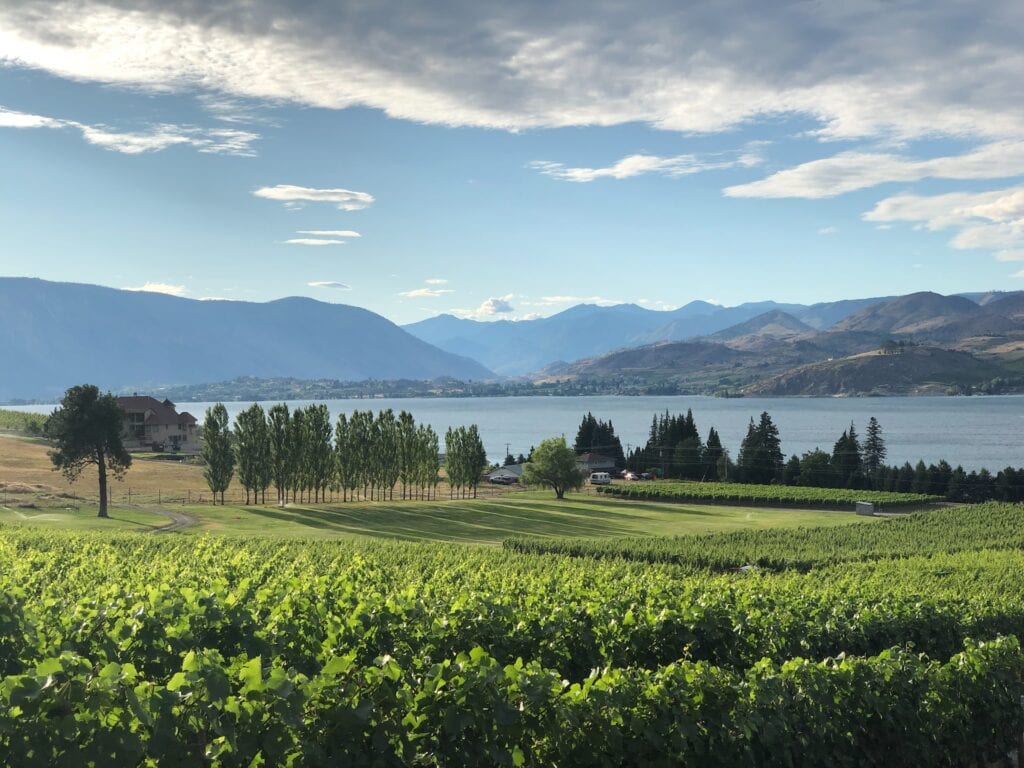
You could be forgiven for thinking Washington has a cool, wet climate that is unsuitable for grape growing. There are actually a number of areas where grapes thrive such as Columbia Valley where winemakers are able to take advantage of the long, warm, sunny days. Cabernet Sauvignon and Merlot are the most prominent red grape varieties with Chardonnay being the most widely planted white variety. Look out for Washington Bordeaux blends too as they’re some of the finest examples anywhere in North America.
See also: 7 Wine Weekend Destinations Within 5 Hours of Washington DC
Cabernet Sauvignon
Red
Columbia Valley is currently producing some of the finest examples of Cabernet Sauvignon in the world. Expect a full body with luscious tannins and great ageing potential mixed with blackberry, cassis, oak, vanilla, earth, leather and chocolate notes. It’s like reading a tasting note to the very best that left bank Bordeaux has to offer! Be sure to look out for Cabernet Sauvignon coming out of Walla Walla and Red Mountain that will offer more red fruits such as cherry and raspberry.
Merlot
Red
Columbia Valley again deserves mention for its outstanding Merlots. Expect full bodied, tannic Merlot that has great ageing potential, is bursting with black & red cherries and also displays hints of blueberry, oak, chocolate and vanilla. Look out for Merlots from Walla Walla and Wahluke Slope that will offer notes of prune and smoke as well as the above.
Bordeaux Blend
Red
Whilst California undoubtedly produces some great blends, you’re going to struggle finding any better than the ones coming from Washington. Columbia Valley is going to offer blends with cassis, plums, black cherry and blueberries on the palate. You may also get notes of coffee, leather and a peppery spice on the long finish too. Blends from Red Mountain will be similar though can often be more floral with aromas of violets emanating from the glass. Also look out for blends from Horse Heaven Hills and Walla Walla.
Sauvignon Blanc
White
Columbia Valley offers some good examples with notes of peach, grapefruit, melon and grass on the palate. For those preferring a fuller bodied style then Yakima Valley will offer notes of apples, pears, tangerine, oak and butter.
Riesling
White
Columbia Valley, Yakima Valley and Ancient Lakes put Washington Rieslings on the map with many of the best examples being comparable to those in Alsace. Columbia Valley Riesling will offer notes of apples, pear and peach with honey and stone. Ancient Lakes and Yakima Valley Riesling usually offer notes of melon, apple and honeycomb.
So, there you have it. A (not so) brief guide to some absolute gems from the very best wine producing states across the US!


